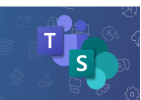Information governance is an approach to managing corporate data that makes digital assets readily available, streamlines management, reduces storage costs, and meets compliance requirements. Processes, roles, controls, and metrics are designed and deployed to convert data into information that has operational and strategic value.

A key objective for information governance initiatives is to provide data that can be trusted.
Let’s jump in and learn:
Information Governance vs. Data Governance
Information governance and data governance are often used synonymously, but are not the same. Information governance relates to an organization’s information as a whole – including documents, records, cybersecurity, and data. Data governance helps improve information governance.
Information governance focuses on:
- the integrity of any data assets within an enterprise
- the business value that can be extracted from data assets
- how risk and costs can be minimized
Data governance focuses on:
- controlling information at the business-unit level
- ensuring the accuracy and reliability of data
- procedures to manage data availability, integrity, usability, and security
Information Governance vs. Information Management
Like data governance, information management is sometimes used interchangeably with information governance, but they are two different ways of handling data. The fundamental difference is that information management is reactive and information governance is proactive. An organization’s information governance is the core of its strategy for information management.
Information governance defines how to:
- optimize information to meet business needs using technologies, policies, processes, and strategies
- comply with government, industry, and corporate regulations
- control information
Information management defines how to:
- manage information throughout its lifecycle (capture, manage, store, classify, distribute, preserve, and delete)
- respond to requests for information
- manage archive policies
- destroy data that is no longer needed
ARMA Definitions
According to ARMA International, this is the definition of information governance: “Information governance is the overarching and coordinating strategy for all organizational information. It establishes the authorities, supports, processes, capabilities, structures, and infrastructure to enable information to be a useful asset and reduced liability to an organization, based on that organization’s specific business requirements and risk tolerance.”
And here is the definition of information management:
“Information management (IM) is the practice of ensuring a consistent flow of organizational information through a defined lifecycle that starts with its conception or capture through to its archival or disposition. While information governance serves as the guideline for the organization's overall information strategy, information management is the tactical execution of that strategy.”
How Information Governance Drives Innovation
With information governance, organizations gain control of their data with ready access to all digital assets. This eliminates time spent addressing issues related to limited visibility that are caused by poor organization.
Information governance allows teams to take full advantage of all that an organizations’ data has to offer and to use it to drive innovation.
Information Governance Challenges
Many of the challenges related to information governance are driven by the following.
- Limited resources, including a lack of:
- data leadership and expertise
- senior management to sponsor information governance initiatives
- budgets
- data documentation
- support for maintenance of information governance initiatives
- Limited understanding of:
- the business value information governance can deliver
- pain caused by poor data practices and how to improve them
- who owns the data
- Data storage and use, such as:
- cloud storage security protocols
- controlling permissions related to stored data
- access controls—especially with sensitive data
- remote workforces
- bring your own device (BYOD) practices
- insecure networks—e.g., home, coffee shop, and business travel locations
- Collaboration tools
Information Governance Initiatives
A business will undertake an information governance initiative to:
- support business needs and strategic objectives
- reduce the costs associated with regulatory penalties
- defend against data breaches
- benefit more from investments in business intelligence solutions
- reduce storage costs
- facilitate electronic discovery
- enhance data analytics results
- educate employees about data policies
Effective information governance initiatives have frameworks that cover:
- staffing required to support the information governance initiatives
- processes for creating, storing, sharing, and disposing of data
- directives for handling sensitive information
- procedures for sharing data externally—e.g., partners, service providers, contractors
- plan for managing all paper and electronic information along with associated systems
- understanding compliance requirements
Roles and responsibilities for information governance initiatives include the following:
- information governance multi-disciplinary committee comprised of key executives
- information governance team that coordinates and manages execution initiatives
- information risk management leader and team to establish and enforce policies and procedures
- information asset management team to identify and define data assets, and then define and manage policies and procedures for handling them
- records manager responsible for data classification, retention, and disposal as well as managing compliance with regulatory requirements
- line-of-business managers who implement and enforce information governance policies and procedures within their groups
- employees with the required education to abide by the rules around information governance initiatives
10 Considerations for Successful Information Governance Initiatives
- Access governance
Manage and reduce unnecessary access to data by employing least privilege policies, which limit access to people with authorized job functions. - Enterprise content management
Leverage technology tools to capture, manage, store, and provide access to data. - Audit trails
Maintain audit logs to provide a record of access and actions related to programs, operations, workflows, and events. - Information lifecycle management
Develop and implement policies and processes to manage data storage, including all infrastructure, backups, disaster recovery, archives, access, change management, and data replication. - Single source of truth
Create an accessible information architecture that acts as a single, trusted data source with data elements mastered (or edited) in only one place and with linkages by reference only. With this system, updates to the data element are propagated, eliminating errors, outdated information, and duplicates. - Records management
Manage the identification, classification, storage, security, retrieval, tracking, preservation, and destruction of all data throughout its lifecycle. - Knowledge management
Implement systems to define, structure, retain, and share the knowledge and experience of employees within the organization to save and operationalize intellectual assets. - Electronic discovery
Enable the collection, identification, and access of electronically stored information. - Information governance technology
Evaluate software tools, such as data management software and enterprise content management (ECM) solutions. - Process / workflow automation
Take advantage of technology to digitize and automate manual processes, as well as reduce errors and costs.
Business Benefits and ROI of Information Governance
Information governance might not sound like an obvious path to greatness, but it can be. Information governance initiatives deliver excellent return on investment.
Organized and well-managed data not only helps with meeting compliance and operational requirements, but it also delivers tangible business benefits, including enhanced analytics, reduced errors, cost savings, and improved productivity.
Egnyte has experts ready to answer your questions. For more than a decade, Egnyte has helped more than 17,000 customers with millions of customers worldwide.


